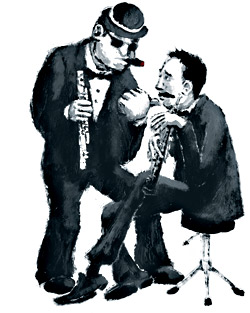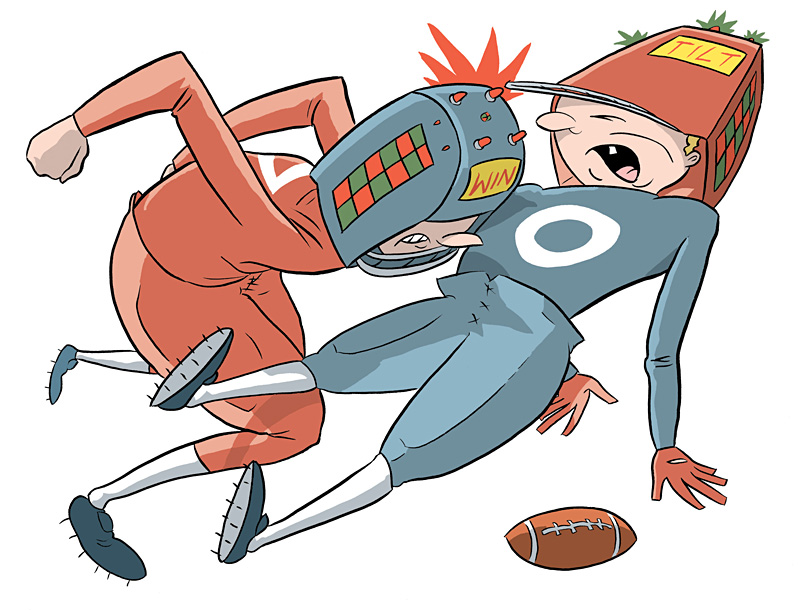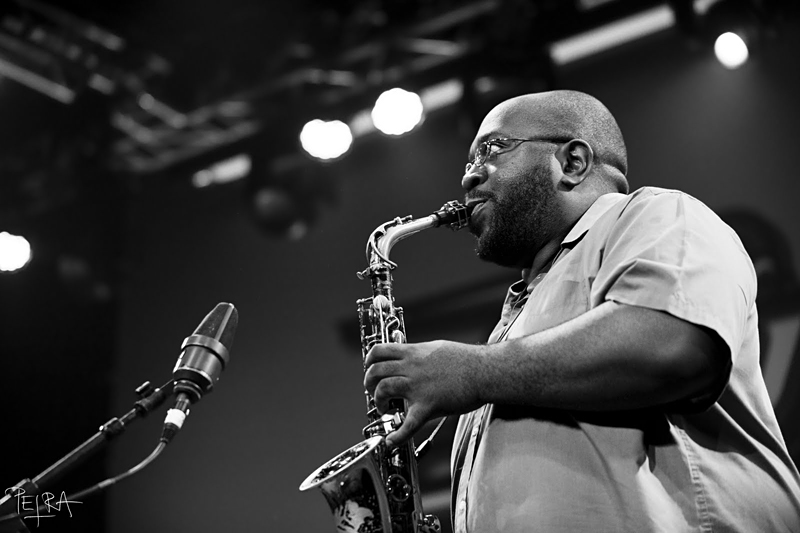It was one of the more bizarre, even absurd, local stories of the year. In an ongoing internal battle over the fate of conductor Gerard Schwarz, certain members of the Seattle Symphony Orchestra—they of the black-tie attire, dignified comportment, and conservatory training— had been engaged backstage in a campaign of harassment and violence against fellow musicians. Or so the daily papers said.
“Symphony Musicians Targets of Vandalism” read The Seattle Times headline on the front page of the Local News section on Sunday, Oct. 15. A day before, the Post-Intelligencer published a similar story. The articles spun a tale of “orchestral terrorism” directed against principal French horn player John Cerminaro (described in both pieces as the primary “target”) and flutist Scott Goff, both of them vocal Schwarz backers. The crimes included damaging instruments, scratching cars, making anonymous threatening phone calls, and leaving a cup of hot coffee in Cerminaro’s mailbox “so that it could fall on him when he reached for mail,” as the Times put it. Such an event “could have caused serious damage to his hands,” warned the P-I.
“These are the unfortunate actions of a very small group,” the symphony’s interim executive director, Mary Ann Champion, told the Times.
The stories were the most startling—and, for the orchestra, embarrassing— flare-up yet in what has been an operatic struggle over the past year for control of the institution, an emotionally strained battle between musicians and board members loyal to Schwarz and those who think he’s leading the group into artistic stagnation and should be replaced. Cerminaro has been a lightning rod in this debate, as he was admitted to the orchestra over the objections of other musicians, and his employment is contractually tied to that of Schwarz, a close friend.
The campaign has been waged through power plays, leaks, and counterleaks. This summer, after the board voted to extend Schwarz’s contract by several more years, musicians opposed to the decision surveyed their fellow orchestra members about Schwarz’s performance. The results were never released to the public, or to the full orchestra, but one musician with knowledge of the survey says that roughly 80 percent of the respondents said a change in symphony leadership was desirable.
Before the results of the survey were even made known, however, a story appeared in The Seattle Times attacking it. The Times reported that “an independent analysis of the survey” commissioned by the symphony’s board had found its results “highly suspect.” The story did not identify the source of its information, though it appeared to come from unnamed, Schwarz- supporting members of the board.
Leaks and media coverage have been followed in many instances by long and shrill rounds of sniping on Internet comment boards such as Seattle Weekly‘s blog. That’s where, after a Weekly story detailing the acrimonious relationship between Schwarz and his players last spring, the dispute took a turn for the truly bizarre.
In a July posting, Cerminaro said he “has tried to appeal to reason in the midst of the turmoil and . . . I have been repaid for my efforts by someone anonymously denting my horn, scratching my car, stealing from my orchestra mailbox, desecrating my photo with pinholes to the eyes and forehead, and phoning my home and threatening my family.”
The Weekly allowed the post to speak for itself. A few months later, however, the SSO’s interim executive director Champion visited a rehearsal, saying she had just gotten off the phone with a writer for the P-I and was “very disappointed” in the musicians’ behavior, according to several players who were there. (Meanwhile, they say, world renowned violinist Pinchas Zukerman, in town for a performance with the SSO, cooled his heels waiting for rehearsal to start.)
The next day, a story appeared in the P-I stating that Cerminaro had been the “main target” of “nasty and violent” acts arising from the conflict over Schwarz’s future. A similar story in the Times followed. Neither paper stated the source of its information.
To some SSO musicians, the real crime is the way the two newspapers reported the anti-Cerminaro incidents—not as charges, but as facts.
“The word ‘alleged,’ was never used,” observes trumpeter David Gordon. The articles, written by the papers’ classical music critics, “were not held to the normal standard of a news story,” he says. “People felt slandered.”
Neither paper gave any indication that the reported version of events might be in doubt. But months later, it clearly is. Attorneys for the players and symphony management jointly hired a private investigator to determine whether the events described happened at all, and if so, by whom.
While the investigation is not yet complete, symphony P.R. manager Mike Eagan says there’s been “nothing sustained” of a criminal nature. “Many people feel these charges were not real and cast a lot of suspicion on the musicians over what was essentially a personality conflict,” he says. He says no new incidents have been reported in the months since.
Gordon feels particularly aggrieved since he is the (unnamed) “key player” whom the P-I reported “gave Champion the finger as she left the podium” following her rehearsal visit. Gordon and other musicians who were at the meeting say that, in fact, Gordon was showing Champion his unadorned ring finger after she asked how his “wife” was recovering from recent surgery. (Gordon is dating, though not married to, a fellow symphony player.)
Eagan, who returned a call placed to Champion, says the bird-flipping incident didn’t happen. “That’s illustrative of a lot of misinformation,” he says.
The P-I‘s classical music critic, R.M. Campbell, was away and unable to comment. His editor, Duston Harvey, said, “Richard has been covering the symphony for decades and has great sources, from the board on down. We stand by the story.”
Other elements of the coverage are similarly in question. Both newspapers said that Cerminaro and Goff had been “targeted” for car vandalism. But neither paper offered any evidence that any damage to their cars was committed by someone “targeting” the owners, let alone by a musician who opposed renewing Schwarz’s contract.
“Other members of the orchestra have had cars stolen from the garage,” says Timothy Hale, a viola player and head of the musicians’ union. “It’s a public place.”
“There’s all kinds of people that come through there,” says cellist Walter Gray. “I’m sorry, a garage is a garage. Accidents will happen.”
A call to Cerminaro was returned by his attorney, Michael Iaria. He said in an e-mail that he was “aware of compelling firsthand accounts by a witness who, while he or she did not see the acts of vandalism, places a prime suspect—a member of [the players’ union]—in the vicinity of one of the cars shortly beforehand.” Iaria did not make the person available to be interviewed over a holiday weekend.
Some of the musicians also find the attempted hot-coffee-assault less than credible. Without going into specifics, cellist Walter Gray notes that some of the players “may have observed an individual leaving his own trash around in the kitchen. It’s not hard to imagine someone putting it in his mailbox and saying, ‘Here, you deal with it.'”
“Context is everything,” replied Iaria in his e-mail. He said this incident was “one among many. And let’s assume that Mr. Cerminaro did not regularly clean up after himself in the kitchen, a trait that afflicts about half the population of the world: What sort of person would communicate their displeasure with this by putting a scalding liquid in a place where it could harm someone? That these musicians see innocence in such mean-spirited and malicious conduct is shameful.”
One of the most shocking allegations—that someone had vandalized Cerminaro’s horn—was also met with skepticism by some of the union musicians, for whom an instrument is sacrosanct. According to a story widely repeated among the players, Cerminaro had previously mentioned slipping on the stairs and denting his own horn, before the vandalism allegation was made.
Iaria said the story was true, but was more complicated. Cerminaro, in fact, has two horns, Iaria said in his e-mail. “Approximately 1 to 1.5 years ago, he dented one when he fell on some stairs.” Then, in the summer of 2006, “Mr. Cerminaro left his other horn on a table in the musicians lounge and left the room. When he returned, there was a dent in it.”
Cerminaro took it to be repaired, Iaria said. “Initially, not wanting to cast aspersions on anyone, and in disbelief that anyone could do this to an instrument, Mr. Cerminaro told [the repairer] that he had fallen with his horn. Almost before the repair was concluded, Mr. Cerminaro told [the repairer] what had really happened.”
Iaria said Cerminaro “has passed a polygraph on this issue, having been found to be truthful when stating that he did not personally cause the damage to his horn in the second of the incidents.” Iaria offered to provide a copy of the test.
Perhaps not surprisingly, neither of the camps in this pitched battle expects to be satisfied by the results of the investigation.
“I’ve heard it’s inconclusive and that’s disturbing,” said Walter Gray. “I personally would love to see everybody interviewed and have a published report.”
“It was an investigation that was doomed from the start to be inconclusive,” said Iaria in an interview. “If the acts aren’t seen and the perpetrator didn’t talk about it, the person would have to fall down and confess.”
Had the symphony administration wanted to get to the bottom of the incidents, Iaria said, it would have “installed security cameras and not told anyone about it.”
To protect his client’s reputation, Iaria said he has hired his own P.I. and launched a parallel investigation, seeking to subject other musicians to polygraph tests.
Even players who are skeptical of Cerminaro’s claims say they can understand why he might feel paranoid. “He hasn’t been welcomed,” said one player who did not wish to be named.
Meantime, several of the musicians have formed a public relations committee to try to combat what they perceive as one-sided coverage of the controversy by the daily papers, whose critics are seen as mostly in bed with Schwarz and his allies. They were particularly spurred to action by the vandalism stories, which seemed expressly leaked in order to discredit the anti-Schwarz musicians and were then passed on to the public as fact.
Asked whether Cerminaro had been the source for the articles, Iaria said he didn’t know.
The P-I‘s Campbell suggested in his story that other orchestra members perhaps suffered “envy of Cerminaro’s public acclaim.” The Times‘s Melinda Bargreen used the term “malcontents” in connection with the anti-Schwarz players. Her story also relied heavily on quotes from cellist Bruce Bailey, known for being in the pro-Schwarz camp, who wove a tale of angry musicians who, after losing the battle over Schwarz’s contract renewal, “stepped over the line, into sabotage and physical acts.”
Bargreen and her editor didn’t return calls for comment. The players’ P.R. committee is seeking meetings with the editors at both papers.
“The damage these articles have done is almost inestimable,” says Scott Wilson, former head of the orchestra’s players’ union. “It’s impugned the professionalism and basic decency of a large group of people.”
He said he hopes both writers have been “chastised for printing scurrilous, unprovable, unproven stuff. Didn’t Dan Rather resign over this?” (Actually it was his producer who got canned.)
“I can’t imagine the concertgoers are happy about it,” said cellist Gray. “I know the donors are not. They’re very distressed about all this.”
The symphony posted a deficit this year and just finished its big year-end fund-raising push as it attempts to build its endowment. “Anything that reflects negatively on the institution inevitably has an impact on donors,” said SSO P.R. manager Eagan.
The listening public, however, appears to be largely undisturbed. The symphony racked up its best December in history, Eagan said, setting records for single-day ticket sales.








